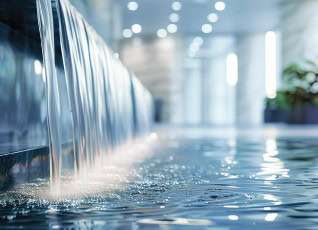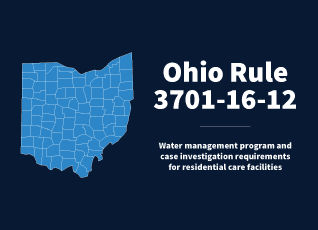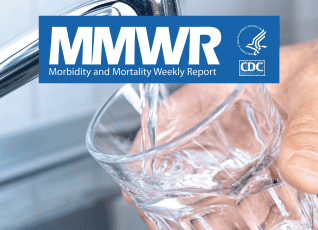The Future of Plumbing: Smart Technologies for Better Water Management

The plumbing industry is undergoing a technological transformation. Aging infrastructure, evolving regulations, and increasing health risks necessitate a shift toward smarter, data-driven water management solutions. These innovations can improve water quality, optimize system performance, and enhance occupant safety. This blog explores how smart plumbing technologies are shaping the future of building water systems, offering practical […]
Report: Gaps in Water Management Programs and Increased Risks

A well-structured and implemented water management program (WMP) is crucial in controlling Legionella and other waterborne pathogens. Recent research has identified common gaps in water system management that may increase the risk of Legionnaires’ disease outbreaks. By understanding these areas and applying proactive solutions, facility teams can strengthen their WMPs and better protect building occupants. […]
“Spring is here—and so is Legionella risk,” warns expert

As the weather warms up, many healthcare facilities prepare for seasonal changes in staffing, patient volumes, and operations. But one area that often gets overlooked during this transition is your building water system—and spring can bring a perfect storm of conditions that elevate the risk of Legionella and sediment-related issues. “Spring is here—and so is […]
Update to Ohio Rule 3701-16-12: Water Management Programs and Case Investigations Now Required for Residential Care Facilities

Effective July 12, 2024, Ohio introduced updates to Rule 3701-16-12 of the Ohio Administrative Code, which requires residential care facilities to have protocols for investigating cases of Legionnaires’ disease and implementing a water management program to control Legionella and other waterborne pathogens. Water management program implementation Every residential care facility in Ohio must establish and […]
Advancing Sustainability and Operational Efficiency in Healthcare

Water systems are critical to healthcare operations, but they also present significant challenges that affect energy use, infrastructure, and equipment performance. Issues like sediment buildup, biofilm formation, and poor system balance can drive up costs, waste energy, and compromise long-term sustainability. By addressing these challenges proactively, hospitals can improve efficiency, reduce expenses, and extend the […]
Why Legionella Isn’t Just a Hot Water Problem: Risks in Cold Water
Legionella is a waterborne pathogen that contaminates nearly half of all building water systems. It typically enters through the municipal cold water supply and thrives in areas of the water system with sediment accumulation, stagnant water, warm temperatures, or where other microbes are present. While hot water is often seen as the biggest risk for […]
How Weather, Climate, and Water Sources Impact Waterborne Disease Hospitalizations

A recent study from Columbia University, published in the open-access journal PLOS Water, investigates how weather conditions, climate, and water sources affect hospital admissions for waterborne infectious diseases in the United States. The study examined 12 years of data from 516 hospitals in 25 states. Key findings on biofilm-forming bacteria Biofilm-forming pathogens, such as Legionella, […]
Legionella: What Is It and How to Control It

What is Legionella? Legionella is a bacterium that causes Legionnaires’ disease and Pontiac fever. It was named after the first known outbreak of Legionnaires’ disease in 1976 at an American Legion Convention. Legionnaires’ disease is a severe type of pneumonia. Pontiac fever is a less severe illness that typically resolves without hospitalization. Approximately 90% of […]
Waterborne Pathogens a Growing Concern in US Drinking Water, CDC Report Shows

The Centers for Disease Control and Prevention (CDC) has released a report summarizing waterborne disease outbreaks in the United States between 2015 and 2020. The report Surveillance of Waterborne Disease Outbreaks Associated with Drinking Water includes data voluntarily reported by public health agencies to the CDC through the National Outbreak Reporting System (NORS). Data reported […]
Legionella Bacteria Water Sampling Methodology

This blog delves into systematic approaches for Legionella water testing, offering valuable insights into best practices and recommendations to ensure the safety of your water. Importance of quarterly Legionella sampling Building water systems are dynamic and influenced by various factors such as usage patterns, maintenance schedules, and seasonal changes in municipal water quality. These complex […]